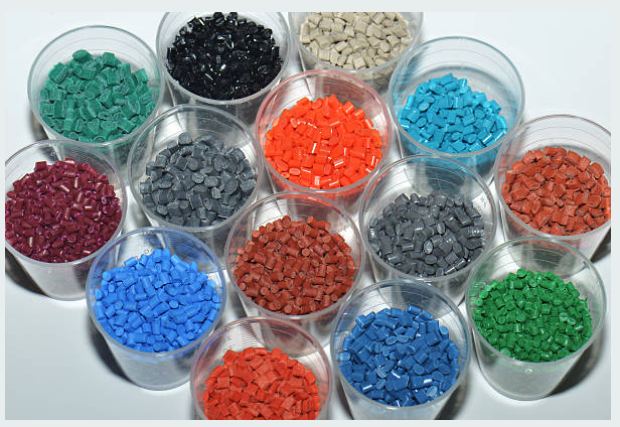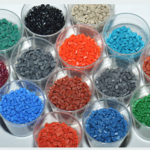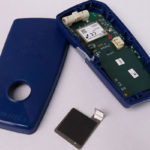WHICH PLASTICS METRIALS ARE USED FOR PLASTIC INJECTION MOLDING ?
In plastics processing, the manufacturing of certain parts, whether technical or not, consists of the injection of a deformable plastic material into a mold in order to achieve its exact shape after cooling, hardening, and demolding. The following is an overview of the main plastic injection molding materials used for plastic molding or high precision over-molding. These synthetic materials are classified into major categories, including thermoplastics, thermosets, and elastomers.
THERMOPLASTICS IN THE FIELD OF INJECTION MOLDING
In the field of plastic injection molding, thermoplastics are the most widely used materials, whether for the design of individual prototypes or the production of parts in small or large series and are therefore often referred to as thermoplastic injection. The injection molding machine and the mold with impression are the main tools used to transform the thermoplastic materials in granular or liquid form into solid molded parts.
POLYETHYLENE (PE)
This extremely versatile material is the most widely used plastic in the world. In fact, polyethylene alone represents one third of the manufacture of parts in synthetic materials and half of the plastic packaging produced worldwide. It has a simple structure and is available in low- or high-density versions, in order to adapt to the requirements of the thermoplastic part to be produced. Both flexible and resistant, it is often found in food utensils and toys.
POLYPROPYLENE (PP)
Polypropylene is one of the main synthetic materials used in plastic injection molding. It is a relatively inexpensive material with good resistance to fatigue and bending and is also recyclable. Once molded and cooled, this thermoplastic is rigid, chemical resistant and waterproof. Its versatility and compatibility with the majority of injection molding machines and tools make it a preferred choice if its characteristics are required for the plastic parts to be produced.
STYRENIC POLYMERS (PS AND ABS)
Among the many styrenic polymers available, the main materials for injection molding of plastic parts are acrylonitrile butadiene styrene (ABS) and polystyrene (PS). Polystyrene is strong and brittle and may be transparent. It is the most inexpensive thermoplastic material, which makes it so successful. Another widely used and recognized styrene polymer, ABS plastic offers a high level of resistance to scratching, impact and heat, for a low density. Its very low cost and high-quality finish also explain its massive adoption in many industries.
POLYVINYL CHLORIDE (PVC)
A synthetic material famous for being used in piping, polyvinyl chloride (PVC) is simply polymerized vinyl chloride. Its waterproofing, strength and chemical resistance properties are noteworthy.
POLYAMIDES (PA)
Polyamide (PA) is the first technical material discovered, of which nylon is a derivative. It has great thermal, chemical, and mechanical properties and is an excellent electrical insulator. Polyamides are available in several forms and are useful in many fields (e.g., industrial and automotive).
POLYCARBONATE (PC)
Polycarbonate is one of the strongest plastics. This thermoplastic can resist heat up to 120 °C. Above all, it is one of the strongest in its category to absorb shocks and impacts without breaking. Moreover, it can be transparent.
POLYETHYLENE OXIDE (POM)
Both very strong and elastic, polyethylene oxide is distinguished by its spring effect (excellent elasticity) and its mechanical qualities. As a derivative of formaldehyde, it is also resistant to friction and hydrocarbons, which makes it an essential material for the design and production of parts in the automotive industry.
POLYMETHYL METHACRYLATE (PMMA)
Clear and shiny polymethylmethacrylate allows the creation of injected parts with a perfect resistance to the sun’s UV rays. It is commonly used for its optical properties and its excellent light transmission. However, it scratches and breaks more easily than PC for example, which is why it should be used with knowledge.
ELASTOMERIC PLASTICS FOR INJECTION MOLDING
Among the available injection molding plastics, elastomers are characterized by their incomparable elasticity and flexibility. A vulcanization process may be necessary to combine them with other materials to optimize certain mechanical or chemical properties and to create certain synthetic rubbers, for example.
THERMOPLASTIC ELASTOMERS
Thermoplastic elastomers (TPEs) are highly prized for their exceptional capabilities. As mixtures of thermoplastics and elastomers, they combine the elastic properties of the latter with the melting, molding, and recycling (remelting) properties of the former. Depending on the physical and technical characteristics required, they can be designed and produced from polyurethane, styrene, polyamide, polyester, polypropylene, and many other polymers, in order to acquire specific advantages and bypass certain disadvantages. TPEs can be processed by plastic injection molding, but also by extrusion.
BIOPLASTICS MATERIALS
A special category of plastic injection materials, bioplastics are bio-based or biodegradable materials, or both! They can be obtained by polymerization of natural materials, from biomass and plant materials. On the other hand, a bioplastic can be entirely synthetic and derived from a hydrocarbon, but in a chemically biodegradable version. If you are interested in either (or both) of these characteristics, please note that not all bioplastics are compatible with the plastic injection molding process.
THE ROLES OF ADDITIVES AND SUPPLIERS IN PLASTIC INJECTION
An injected plastic material may be combined with an additive or adjuvant. In this case, the plastic material for injection molding has the same properties as the additive. For example, fiberglass or minerals can be mixed with a thermoplastic to solidify and strengthen the final part. Conversely, rubber can be used to soften the
the molded part. Lastly, a specific chemical agent can be mixed with the plastic material to be injected to fireproof, lubricate, protect from UV or electromagnetic waves the finished product.
Do you require expert advice to make the right choice of plastic material for injection molding in relation to your specifications, your objectives and your budget? Do not hesitate to contact us to discuss it and the experts of FPM Injection will advise you to select the right plastic material for your project.
Comments are closed.




